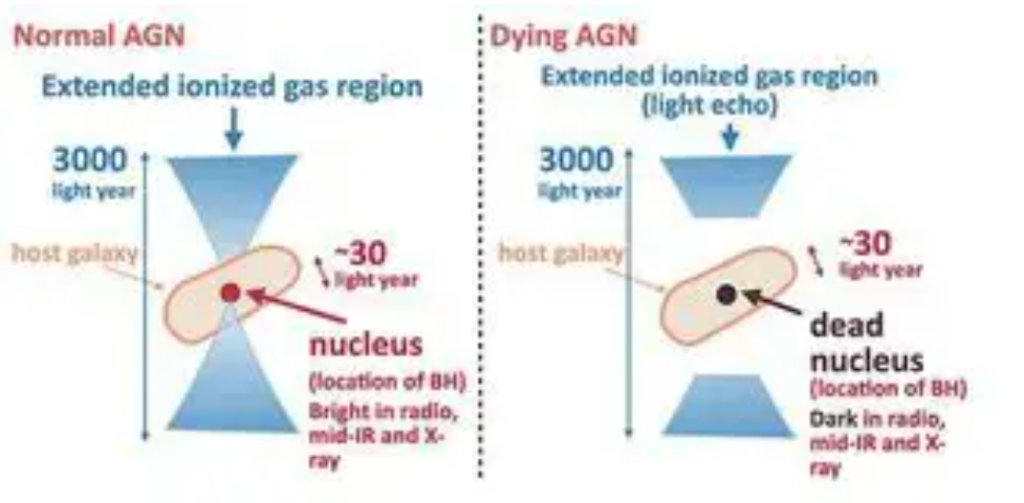Astronomers detected a “light echo” spanning 3,000 light-years from a dying supermassive black hole.
There are the supermassive black holes whose masses are millions or even billions of times larger than the mass of the sun, and these are at the centres of the galaxies such as ours, the Milky Way.
Researchers refer to some of those supermassive black holes as active galactic nuclei (AGN) and these are known to release a lot of radiowaves and X-Rays. It is suggested that the high-energy radio sources known as AGN are to blame for the twin jets of ionized gas with which you can catch a glimpse of many galaxies.
Each AGN must one day pull the plug, as must all other organized entities. But to this date scientists are in a process of establishment how and when this actually takes place. In Sendai, Japan the faculty of Tohoku University astronomer Kohei Ichikawa has been heading a team of researchers that possibly have found a lead. Observing the far off galaxy called Arp 187, those scientists have identified what they think to be the late stages of an AGN.
New Mexico in the United States of America and ALMA in northern Chile were used by Ichikawa and colleagues to observe Arp 187 with radio telescopes. The presence of twin jet lobes which is a clear sign of an AGN was observed. However, it was not capable of detecting Radio-Waves which also should originate from an active nucleus.

Therefore, employing NASA’s NuSTAR (“Nuclear Spectroscopic Telescope Array”) X-ray satellite, the scientists got a better look at Arp 187’s core. The team described in a study earlier this month at the virtual 238th meeting of the American Astronomical Society how while AGN usually emit a great deal of X-rays, there is no such signal occurring in NuSTAR.
Therefore, according to the researchers, the AGN of Arp 187 has been quenched at some phase, as seen from the earth, in the last several thousand years.
The jets an AGN produces are powerful enough to enable this measurement. The Arp 187s are spread for 3000 light years; therefore matter stream goes on for millennia after the AGN core “dies. ” Astronomers called this phenomenon a “light echo;” it looks like smoke after a fire has been quenched.
Unknowingly the researchers bumped onto the structure, the discovery was said to be a serendipity by the study team members hence indicating that Arp 187 could assist in unveiling the progression that happens at the last phase of an AGN’s life.
As Ichikawa said in the statement, more dying AGN will be searched in the similar method as this study; High spatial resolution follow-up observation will also be done to mapping the gas inflows and outflows to understand how the shutdown of AGN activity happened.
Do not forget to share your opinion with us to provide you with the best posts !




0 Comments